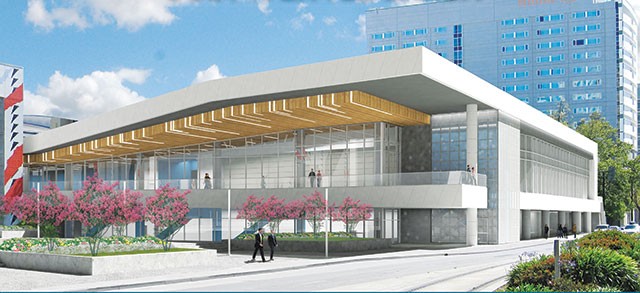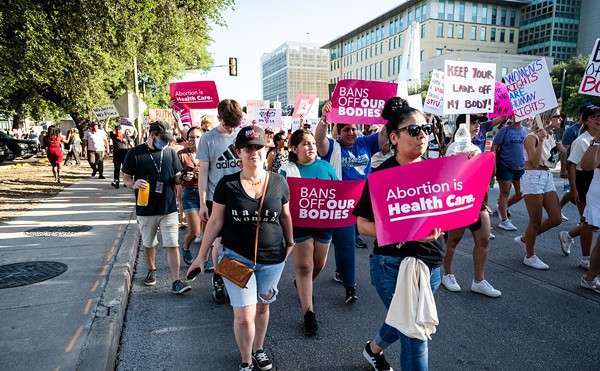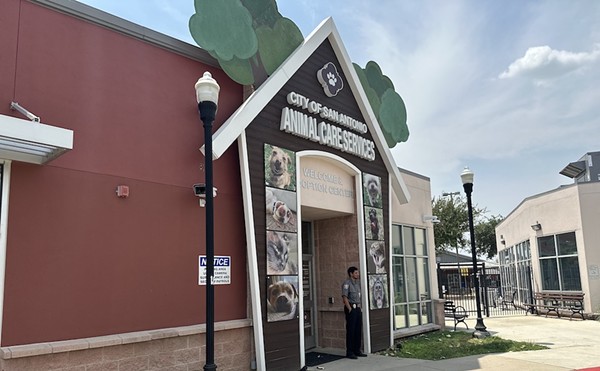
“Conventions go to the city which exerts the greatest efforts to secure them. San Antonio can get any convention that it goes after.”
That was the position of the San Antonio Chamber of Commerce in April 1920. With the prospect of a grand new auditorium, local business leaders were confident that, “They will come to San Antonio … ”
Today, with construction underway on the $325 million expansion and rebuilding of the Henry B. Gonzalez Convention Center downtown, things don’t look quite so sure. Just a few days ago, a headline in the Chicago Sun-Times made clear the competitive reality we face today: “Millions in Taxpayer Subsidies to Lure Conventions.” Sun-Times reporters Tim Novak and Chris Fusco report that during the past three years Illinois taxpayers spent $26.5 million in an effort to lure (and keep) some 80 conventions and trade shows at Chicago’s McCormick Place convention center. The list of subsidies was impressive, ranging from an even $1 million for the BIO International biotech event and $1.6 million for the Radiological Society of North America, to $397,902 for the American Library Association’s annual meeting and $71,760 for the American Institute of Architects.
Some of the “subsidized” events at McCormick are Chicago perennials, conventions that need the massive exhibit halls, which total 2.7 million square feet, the largest in the nation. Others, like the AIA and the ALA, are events that San Antonio has hosted before and would no doubt like to draw again.
But our city faces a new—and highly competitive—reality in the contest for convention business today. A host of cities are offering millions of dollars in incentives, discounts and giveaways to conventions and their attendees. Dallas created a Tourism Public Improvement District, levying a tax on city hotels that provides some $11 million a year for marketing and convention incentives, part of an effort to make the city a “Top Five” destination. The District has doled out incentives to such groups as the American College of Emergency Physicians, the National Rifle Association and the BCS Bowl Championship, and will continue to subsidize meetings with $5-6 million a year.
The convention center discount war is growing beyond Texas, too. San Diego has been offering millions in “rental discounts” in recent years. The giveaway total in its 2015 budget comes to $5.1 million. The deals are just as abundant, and growing, for the Los Angeles Convention Center. In Fiscal Year 2010, LA doled out $3.5 million in discounts. The discount total hit $5.8 million in 2011 and $5.4 million in 2012, with incentives for groups such as the American Planning Association, the Urban Land Institute, the College Art Association and the NAACP. And when Los Angeles puts out those rental incentives, it often offers cash back as well–$25,000 to pay for event expenses, and a $5,000 “bonus” for signing on for multiple years.
Even the prime visitor destination San Francisco has jumped into the discount war, creating a special taxing district to fund expansion of its Moscone Convention Center and support a Convention Incentive Fund, which will be used to attract major events and meetings to the city’s venues. The city’s 2012 management plan notes that, “In the increasingly competitive convention market, many first-tier cities (and several second- and third-tier cities, as well) provide convention-center rental offsets to attract meetings with significant economic impact.”
But surely San Antonio, with its enormous appeal as a visitor destination and the attraction of the Henry B. Gonzalez Convention Center and the River Walk, doesn’t have to stoop to offering incentives and giveaways? We already have in some notable cases. When Time Inc. proposed in 2012 that SA host Festival People en Español, it used the model of the Essence Music Festival in New Orleans, which drew 400,000 attendees and created an economic impact estimated at $169 million. San Antonio was promised 40,000 attendees for the inaugural two-day festival, and as many as 70,000 the following year. The city, in turn, gave event organizers a three-year deal with up to $500,000 as a “sponsorship” fee, $120,000 in advertising in People en Español magazine, and free rent at the Alamodome and Convention Center.
So what did we get for giving away the center and dome and cash to boot? Last year festival organizers reported total attendance of 40,000—well below the promised 70,000. But the Express-News noted that only 6,000 turned up at the Convention Center on Saturday, and 5,000 attended the evening concert at the Alamodome.
Now Josh Brodesky of the Express-News reports that City staff are proposing we spend $50 million to upgrade and improve the dome. Why? To compete for an NCAA Final Four or college-football championship game. And that in turn would require thousands, if not millions, more in subsidies and giveaways. But do we really believe they will come to San Antonio?

















